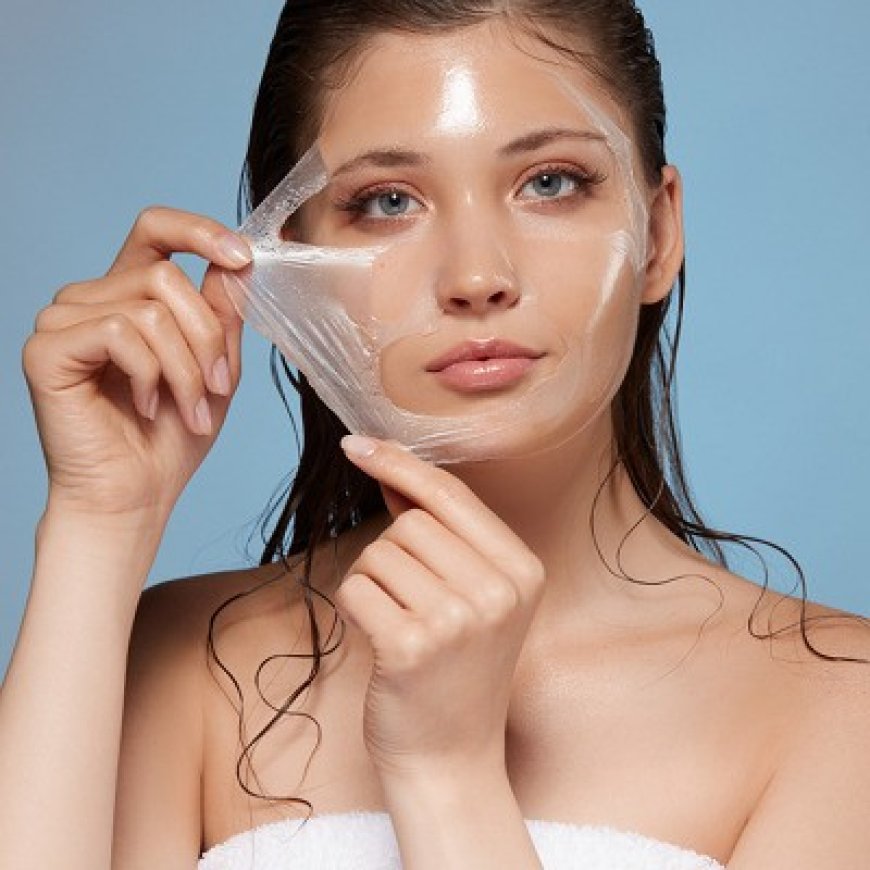Chemical Peeling for Every Skin Type: Achieving Radiant Skin with Custom Treatments

Chemical peeling is a transformative skincare treatment that has garnered immense popularity due to its ability to improve a range of skin concerns. Whether you're battling acne scars, pigmentation, fine lines, or simply want to rejuvenate your skin, chemical peels offer a versatile solution. What makes this treatment particularly attractive is its customization—chemical peels can be tailored to suit every skin type, from oily and acne-prone to dry and sensitive skin.
In this blog, we’ll explore how chemical peels in Islamabad for different skin types and how you can achieve glowing, healthy skin with the right treatment.
What is Chemical Peeling?
Chemical peeling is a non-invasive cosmetic procedure that involves the application of a chemical solution to the skin. This solution exfoliates the outermost layer of the skin, promoting the shedding of dead skin cells and stimulating the regeneration of new, fresh skin. By removing the top layer, chemical peels can help address various skin concerns, including:
- Acne scars
- Fine lines and wrinkles
- Uneven skin tone and pigmentation
- Sun damage
- Large pores
Peels are categorized into three main types based on their depth of action: superficial peels, medium peels, and deep peels. The choice of peel depends on your skin type and the specific skin concerns you wish to address.
How Chemical Peels Work for Different Skin Types
1. Oily Skin
Oily skin often leads to clogged pores, blackheads, and acne. The excess oil production makes this skin type more prone to breakouts. For individuals with oily skin, chemical peels that help regulate sebum production and prevent clogged pores are ideal. Salicylic acid, a beta hydroxy acid (BHA), is one of the most effective ingredients for oily skin. Salicylic acid penetrates deeply into the pores, helping to clear blockages and reduce the appearance of blemishes.
-
Recommended Peels:
- Salicylic Acid Peels: This peel helps control oil production and unclogs pores, making it highly beneficial for acne-prone and oily skin types.
- Glycolic Acid Peels: Glycolic acid, an alpha hydroxy acid (AHA), exfoliates the skin’s surface and enhances skin texture, reducing oiliness and helping to brighten the skin.
-
Benefits:
- Reduces acne and breakouts
- Controls excess oil
- Improves skin texture and clarity
2. Dry Skin
Dry skin lacks moisture and often appears dull, rough, and flaky. Those with dry skin can benefit from peels that exfoliate gently and simultaneously boost hydration levels. Glycolic acid and lactic acid are commonly used for this skin type. These AHAs are gentle on dry skin and provide mild exfoliation while also encouraging moisture retention, making the skin feel soft and hydrated.
-
Recommended Peels:
- Lactic Acid Peels: Lactic acid is a gentle exfoliator that helps dry skin by removing dead cells while increasing moisture levels, resulting in softer, smoother skin.
- Glycolic Acid Peels: This peel helps hydrate and exfoliate simultaneously, promoting a more radiant and smooth complexion.
-
Benefits:
- Hydrates and nourishes the skin
- Exfoliates dead skin cells
- Improves skin texture and brightness
3. Sensitive Skin
Sensitive skin requires extra care, as it tends to react easily to certain ingredients or treatments. The goal for sensitive skin is to find a peel that exfoliates without causing irritation, redness, or burning sensations. Fruit enzyme peels and gentle glycolic acid peels are often preferred for sensitive skin because they provide effective exfoliation without aggravating the skin.
-
Recommended Peels:
- Fruit Enzyme Peels: These peels use natural enzymes from fruits like papaya and pumpkin to exfoliate the skin in a mild, non-irritating way, making them perfect for sensitive skin.
- Mild Glycolic Acid Peels: A lower concentration of glycolic acid offers gentle exfoliation without causing excessive dryness or irritation.
-
Benefits:
- Soothes and calms the skin
- Gently exfoliates without irritation
- Reduces redness and inflammation
4. Combination Skin
Combination skin, which features both oily and dry areas (such as an oily T-zone with dry cheeks), requires a balanced approach. For individuals with combination skin, the goal is to target the different areas with tailored treatments that address both excess oil and dryness. Glycolic acid and salicylic acid peels work well for combination skin, offering a balanced exfoliation that targets both oil production and dry patches.
-
Recommended Peels:
- Salicylic Acid Peels: For the oilier T-zone, salicylic acid clears out clogged pores and reduces shine.
- Glycolic Acid Peels: Glycolic acid addresses the dryness on the cheeks and helps to exfoliate the skin evenly.
-
Benefits:
- Balances oil production and hydration
- Improves overall skin texture
- Smoothens out both oily and dry patches
5. Acne-Prone Skin
Acne-prone skin is typically marked by the presence of active breakouts, clogged pores, and scarring. For people with acne-prone skin, chemical peels can help both treat active acne and improve skin texture by reducing scarring. Peels that contain salicylic acid are especially effective for acne treatment as they help clear pores and reduce inflammation. Additionally, retinoid peels can promote cell turnover and prevent new breakouts.
-
Recommended Peels:
- Salicylic Acid Peels: These peels are highly effective at controlling acne and preventing future breakouts by deep-cleaning the pores.
- Retinoid Peels: Retinoids encourage skin cell turnover, preventing clogged pores and promoting smoother skin.
-
Benefits:
- Treats active acne and reduces future breakouts
- Reduces the appearance of acne scars
- Improves skin texture and tone
6. Hyperpigmented Skin
Hyperpigmentation, such as dark spots, sunspots, and melasma, occurs when there is an excess of melanin production. Chemical peels that target pigmentation can help fade dark spots and even out skin tone. Glycolic acid and mandelic acid are often used to treat hyperpigmentation, as they can gently exfoliate the skin and promote the turnover of skin cells, helping to fade dark spots over time.
-
Recommended Peels:
- Glycolic Acid Peels: Glycolic acid helps exfoliate the skin’s surface and lighten pigmentation over time.
- Mandelic Acid Peels: Mandelic acid, being gentler, is excellent for treating pigmentation issues without causing irritation, making it suitable for sensitive skin types.
-
Benefits:
- Reduces dark spots and pigmentation
- Evens out skin tone
- Brightens the complexion
The Benefits of Chemical Peeling for All Skin Types
Regardless of your skin type, chemical peels offer several benefits that can contribute to smoother, brighter, and more youthful-looking skin:
- Exfoliation: Removes dead skin cells and helps reveal fresher, healthier skin.
- Collagen Boost: Encourages the production of collagen, which helps to firm and plump the skin.
- Improved Skin Texture: Evens out skin texture by reducing rough patches, acne scars, and fine lines.
- Brighter Skin: Helps fade pigmentation issues and enhances overall skin radiance.
- Youthful Appearance: Reduces signs of aging, including fine lines, wrinkles, and dull skin.
Conclusion
Chemical peels are a versatile and effective treatment that can be customized to meet the needs of every skin type. Whether you're struggling with acne, pigmentation, dryness, or just looking for smoother, more radiant skin, there’s a peel for you. The right chemical peel can help you achieve a glowing complexion by exfoliating dead skin, boosting collagen production, and treating common skin concerns.
What's Your Reaction?

























